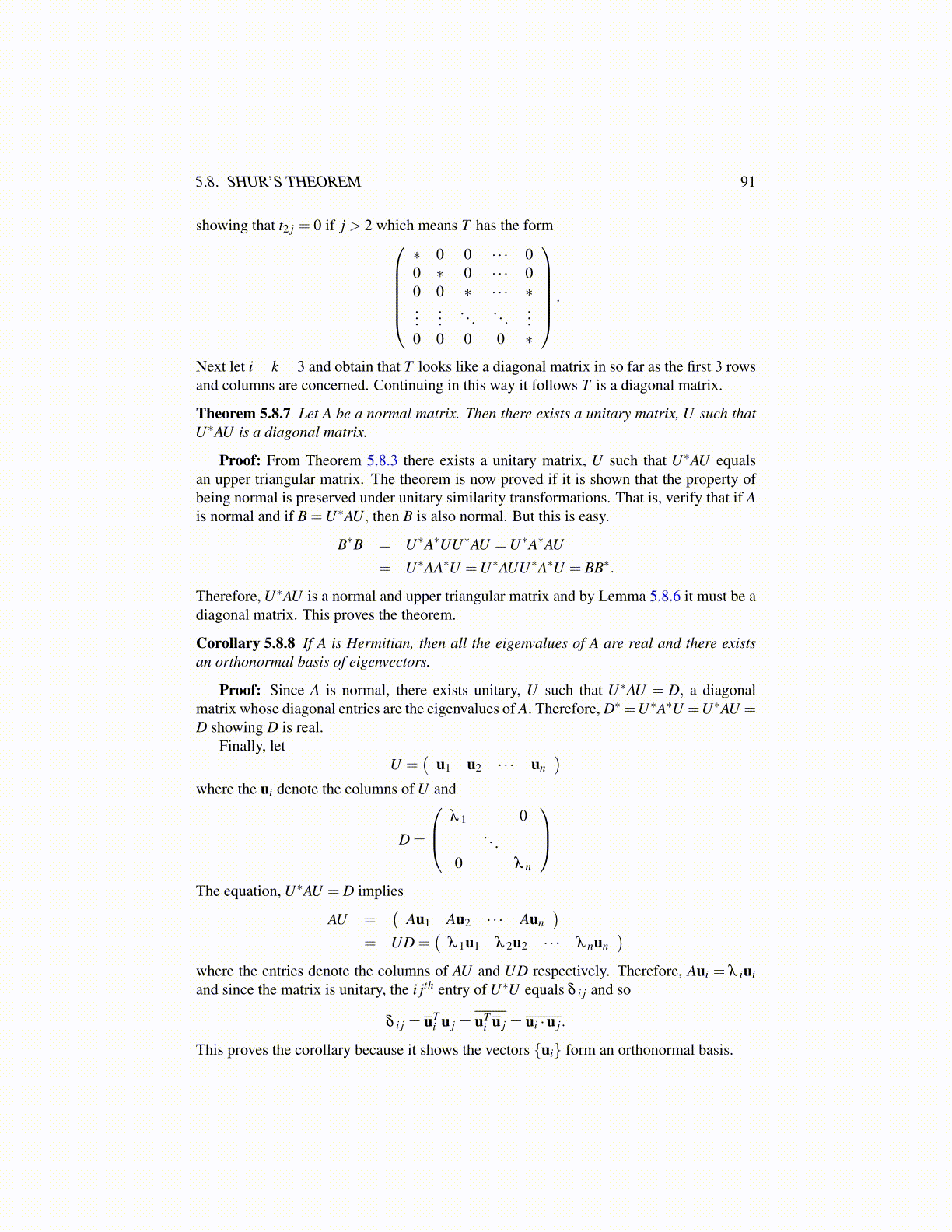
5.8. SHUR’S THEOREM 91
showing that t2 j = 0 if j > 2 which means T has the form∗ 0 0 · · · 00 ∗ 0 · · · 00 0 ∗ · · · ∗...
.... . . . . .
...0 0 0 0 ∗
.
Next let i = k = 3 and obtain that T looks like a diagonal matrix in so far as the first 3 rowsand columns are concerned. Continuing in this way it follows T is a diagonal matrix.
Theorem 5.8.7 Let A be a normal matrix. Then there exists a unitary matrix, U such thatU∗AU is a diagonal matrix.
Proof: From Theorem 5.8.3 there exists a unitary matrix, U such that U∗AU equalsan upper triangular matrix. The theorem is now proved if it is shown that the property ofbeing normal is preserved under unitary similarity transformations. That is, verify that if Ais normal and if B =U∗AU, then B is also normal. But this is easy.
B∗B = U∗A∗UU∗AU =U∗A∗AU
= U∗AA∗U =U∗AUU∗A∗U = BB∗.
Therefore, U∗AU is a normal and upper triangular matrix and by Lemma 5.8.6 it must be adiagonal matrix. This proves the theorem.
Corollary 5.8.8 If A is Hermitian, then all the eigenvalues of A are real and there existsan orthonormal basis of eigenvectors.
Proof: Since A is normal, there exists unitary, U such that U∗AU = D, a diagonalmatrix whose diagonal entries are the eigenvalues of A. Therefore, D∗=U∗A∗U =U∗AU =D showing D is real.
Finally, letU =
(u1 u2 · · · un
)where the ui denote the columns of U and
D =
λ 1 0. . .
0 λ n
The equation, U∗AU = D implies
AU =(
Au1 Au2 · · · Aun)
= UD =(
λ 1u1 λ 2u2 · · · λ nun)
where the entries denote the columns of AU and UD respectively. Therefore, Aui = λ iuiand since the matrix is unitary, the i jth entry of U∗U equals δ i j and so
δ i j = uTi u j = uT
i u j = ui ·u j.
This proves the corollary because it shows the vectors {ui} form an orthonormal basis.